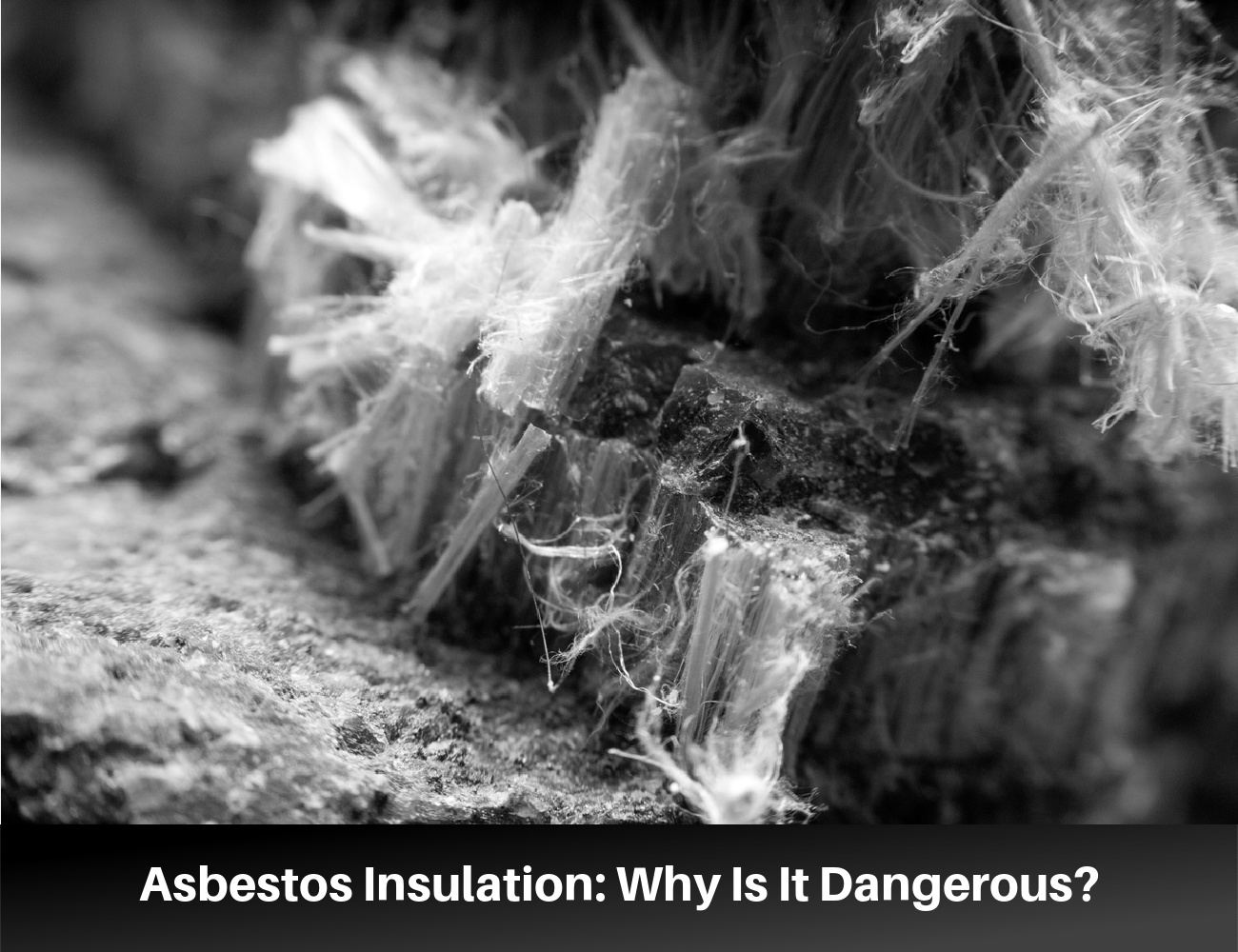Asbestos insulation is best known as something you don’t want in your house. Asbestos insulation has been proven dangerous to people’s health. It has been connected to asbestosis, lung cancer, mesothelioma, ovarian cancer, and laryngeal cancer, among other health problems.
Finding asbestos insulation or pipe wrapping in buildings during renovations usually causes extra costs and wasted time. Safe removal and disposal of asbestos is a serious business. DIY removal is not recommended. Improper handling increases the chance of exposure to asbestos fibers. Even that white joint tape on old heating ducts contains asbestos.
What Is Asbestos?
Asbestos is a naturally occurring silicate mineral with long thin fibrous fibers. These fibers are composed of microscopic “fibrils” that are released into the atmosphere by abrasion among other processes.
This unique type of fiber allows asbestos to be turned into cotton-like material. Making it easy to handle and mix with other materials.
Asbestos History and Uses
Asbestos has been used in over 3000 products over the centuries. It is easily mined, cheap, easily manufactured into other products, and a very useful additive. Many developing countries support the use of asbestos in building construction. In 2020, Russia, the world’s largest producer mined approximately 790,000 tons of asbestos.
Asbestos is an excellent thermal insulation material and electrical insulator. It is very fire resistant. (The name is derived from Greek meaning “inextinguishable” and refers to lamp wicks that never burn up.)
Asbestos has been used for thousands of years to create flexible products that will resist heat and not burn up. Industrial-scale mining began in the 1870s allowing asbestos to be adapted for use in more products. Some products include:
- Boilers.
- Cement pipe.
- Automotive components like brake pads, clutches, and transmission parts.
- Electric motor components
- Heat protective pads.
- Paper products.
Today, the limits placed on asbestos use have reduced the number of products containing asbestos. All of them are imported.
- Automobile Clutches.
- Brake Pads.
- Corrugated Sheathing.
- Cement Pipe.
- Roofing Materials.
- Vinyl tile.
Asbestos Insulation Uses
During most of the 20th century, almost any product used as insulation contained asbestos. Almost every house built before 1975 has asbestos in it. Even caulking and anything requiring heat-resistant covering. It was even used to manufacture blankets used in hospitals.
The construction industry became an early enthusiastic user of asbestos. Vermiculite was used for wall and attic insulation from about 1919 – 1990. It is lightweight, fire resistant, odorless, and provides R-2.0 per inch.
Asbestos was also used in the manufacture of drywall, drywall mud, and asbestos siding. By the end of the 19th century construction uses included fireproof coatings, pipe insulation, concrete, bricks, fireplace cement, ceiling insulation, flooring, and roofing, among numerous other products. In 2011, over 50% of British homes still contained asbestos despite a years-old ban.
Spray-on Asbestos Insulation
Spray-on insulation is used on ceilings, walls, and beams to create a fireproof insulating blanket. It is quick and inexpensive. It is most often seen on the ceilings of commercial buildings and factories as a thick gray coating.
Before 1990 many of these coatings contained up to 85% asbestos. Since 1990, spray-on insulation containing more than 1% asbestos must use binders during spraying to encapsulate the fibers.
Loose-Fill Asbestos Insulation
Loose-fill asbestos insulation is used like cellulose blown-in insulation, fiberglass blown-in, or mineral wool blown-in. It is blown loose into attics and wall cavities. The light fluffy cotton-like product looks very similar to white fiberglass.
Asbestos Rigid Board Insulation
Asbestos Insulation Boards (AIB) were glued to concrete walls to provide basement insulation, as ceiling tiles, soffits, and partition walls among other uses. Made from almost pure asbestos, these rigid boards resemble expanded polystyrene at first glance. Asbestos rigid insulation provides approximately R-2.0 per inch.
Asbestos Wrap Insulation
HVAC pipes and ducting and some plumbing pipes have been wrapped in asbestos insulation for decades–in houses, commercial buildings, and Navy ships. Before 1980 pipes were wrapped with asbestos-based air cell insulation–a type of cardboard manufactured from asbestos paper. Other pipe insulation known as asbestos wool insulation–resembling fiberglass pipe wrap–was also used.
Asbestos Bans
Over 55 countries around the world have banned asbestos use. In some countries, there is a very short list of exceptions for specialized products–such as clutches, brake pads, some roofing materials, and vinyl tile. Some of the countries banning products containing asbestos include the European Union, Japan, Australia, and a handful of African and South American countries.
Notable among the non-compliant countries are Canada, China, the United States, India, and Russia. Asbestos kills about 15,000 Americans yearly; yet over 8 million lbs. is still imported into the country every year.
Prior to 1990, domestic vermiculite containing asbestos was mined at Libby, Montana, and processed at 245 sites around the country. The processed vermiculite was used as home insulation in tens of thousands of homes and in potting soil.
Asbestos is very friable–easily crumbled or pulverized. As asbestos crumbles it releases microscopic fibers that are easily breathed into the lungs where they can lodge permanently. In many cases, asbestos insulation is fairly stable. If left undisturbed the fibrils will stay with the product. Renovating houses containing asbestos is one of the main activities that release asbestos particles into the air where they can be inhaled or ingested.




